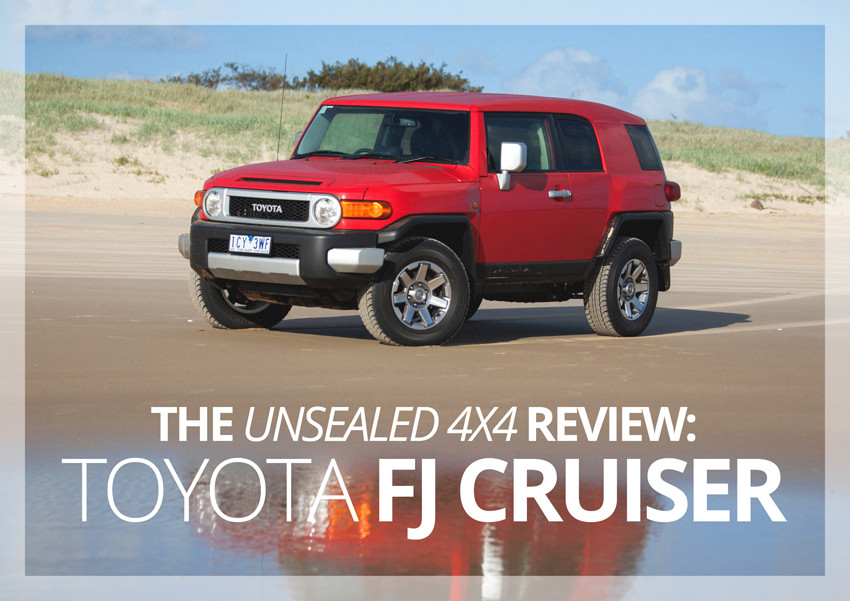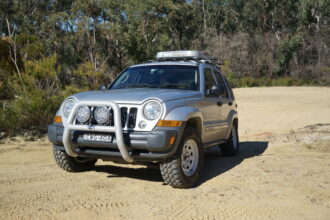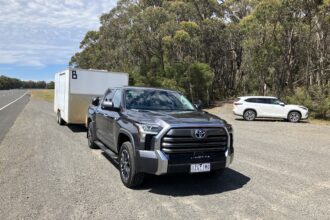The FJ Cruiser is a sign that there’s a glimmer of hope for 4X4 enthusiasts within the presumably perfectly organised offices at Toyota’s HQ. The FJ packs almost everything a four-wheel driver could want; twin fuel tanks, washable floors, impressive approach, departure, and break-over angles, and even a rear locker.
The suspension is pretty good too, and the CRAWL system makes people look like they can drive much better than they can. Build quality is on par with other ‘Cruisers made in Japan, and the interior is unique while still being distinctly utilitarian, though they could probably ditch the body coloured accents.
If you held a focus group of four-wheel drivers with the intention to build a new 4X4, you’d probably end up with something a lot like the FJ Cruiser.
So why does everyone I talk to hate – no wait, loathe – this vehicle. Why do they want to see it burnt at the stake as an abomination to everything holy in the world of off-road. Simple: because they haven’t driven it, and because it’s different.
Sure, the styling is love-it-or-hate-it, and the rear visibility is comparable to that of a cruise ship, but it’s actually a fantastic vehicle – it just takes some getting used to. You quickly learn to look past the lack of visibility and to place your trust in the included reversing camera that’s built into your rear view mirror. And after time you learn to adjust to the in-your-face styling that makes you feel a bit ridiculous and just appreciate the ride quality, powerful petrol engine, and relatively decent fuel economy.
The lack of a turbo-diesel engine will turn some four-wheel drivers away from this enthusiast-oriented model, but I’m not sure if it really should. I saw as low as 11.5 L/100km while towing an Ultimate Camper from Sydney to Fraser Island, and figures of around 10.0 L/100km on the highway without a trailer. When you consider the lower price of petrol, it’s probably cheaper to run than most diesels. With the recent addition of an 87 litre auxiliary tank as standard, in addition to the 72 litre main tank, the range argument begins to fall away, too.
I was glad to have the petrol engine on Fraser Island. It meant for instant lag-free power when I ran into a patch of soft sand, which was much appreciated towing the Ultimate Camper. I know Fraser isn’t the most difficult or technical track in Australia, but the fact that I was able to take a stock vehicle anywhere I wanted on the island, with a camper trailer, really impressed me. Sure, I got stuck a few times, but much larger built-up vehicles got themselves bogged in the same spots, too.
When I took the camper trailer off for a run to the northernmost point of Fraser Island, Sandy Cape, I was able to cruise on the beach as if I was on a highway — it was almost spooky how quiet it was inside for a relatively utilitarian vehicle. Another testament to its build quality was that no matter if I was cruising down corrugations or hitting those unforeseen whoops on the beach, the FJ Cruiser didn’t creak, squeak or rattle one bit. It must be one of the quietest 4X4s I’ve tested, which is surprising because you wouldn’t exactly call it luxurious.
When I pushed it off-road, once again the FJ Cruiser didn’t falter. You get the sense that the vehicle is actually designed with some thought in mind to its off-road capability. The wheels are pushed out close to the bumpers, so you can climb things and manoeuvre quite easily, and the mid-length wheelbase means you’re not going to get hung up on much. Throw a small lift and a set of aggressive tyres on it and I could only think of one place you wouldn’t want to go.
That place is the pub, because no matter how great of a 4X4 this vehicle is, people still hate it, and your mates will undoubtably continually make the FJ Cruiser the butt of their jokes. I’ll admit that it isn’t the prettiest, and that the ergonomics are slightly odd, but at the end of the day it’s one of the most capable out-of-the-box 4X4s sold in Australia. If you can put up with the constant jabbing, you’ll be laughing and basking in capable comfort on the tracks as they’re tossed about in their old, less comfortable, more expensive to run four-wheel drives.
“Sure, I got stuck a few times, but much larger built-up vehicles got themselves bogged in the same spots, too.”
“I’ll admit that it isn’t the prettiest,
and that the ergonomics are slightly odd,
but at the end of the day it’s one of the
most capable out-of-the-box 4X4s sold in Australia.”









